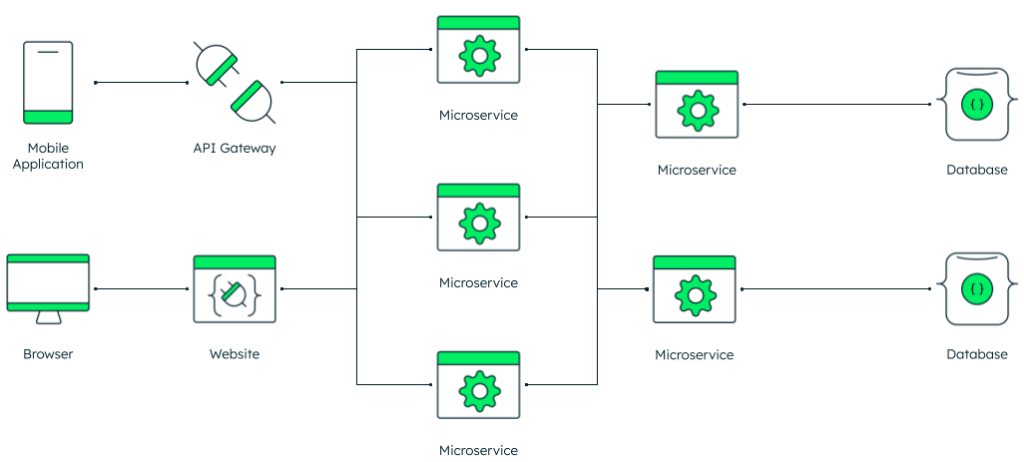Microservices are a software architecture approach in which an extensive application is built as a suite of small, independent services that communicate with each other over well-defined APIs. This approach has several benefits compared to more traditional monolithic architecture, in which an entire application is built as a single, interconnected unit.
One of the key benefits of microservices is that they enable organizations to develop and deploy software more quickly and efficiently. Because microservices are small and independent, they can be developed, tested, and deployed independently of each other. This means that changes to one service can be made and deployed without affecting the rest of the application, allowing for faster development and deployment cycles.

Another benefit of microservices is that they improve the resilience and fault tolerance of an application. Because each microservice is independent, the failure of one service will not necessarily bring down the entire application. This makes it easier for an application built using microservices to withstand and recover from failures and disruptions.
Finally, microservices can also make it easier for organizations to scale their applications. Because each microservice can be scaled independently, organizations can easily add capacity to specific services that are experiencing increased demand, without having to scale the entire application. This can help organizations save money and resources by only scaling the parts of their application that need it.
Overall, the use of microservices can enable organizations to develop and deploy software more quickly, improve the resilience and fault-tolerance of their applications, and more easily scale their applications to meet changing demands.
Change from Monolith to Microservices
If your organization is currently using a monolithic architecture for its software applications and is considering switching to a microservices architecture, there are several steps you can take to make this transition. Here are a few key steps to consider:
- Start by understanding the principles of microservices and the benefits they can offer. This will help you determine whether microservices are the right fit for your organization and its specific needs.
- Identify which of your organization’s existing applications are good candidates for a microservices architecture. This may include applications that are large and complex, have a high degree of functionality, or are difficult to maintain and update using a monolithic architecture.
- Develop a plan for transitioning these applications to a microservices architecture. This plan should outline the specific steps you will take to decompose your existing monolithic application into a suite of small, independent services, as well as the resources (such as time and money) that will be required to implement this transition.
- Begin the process of decomposing your existing application into microservices. This will typically involve breaking down the application into smaller, independent services that can each be developed, tested, and deployed independently.
- As you decompose your application into microservices, be sure to implement robust communication and coordination mechanisms between the different services. This will ensure that the other microservices can work together effectively to deliver the functionality of your overall application.
- Monitor and evaluate the effectiveness of your transition to a microservices architecture, and make adjustments as needed. This will help you ensure that your organization is realizing the benefits of microservices and that your application is operating effectively using this new architecture.
The Use of Microservices in Many Industries
Microservices are a software architecture approach that is used in many different industries. Some examples of industries that commonly use microservices include:
- E-commerce: Many online retailers use microservices to build their applications, as this approach allows them to quickly add and update the various features and functionalities that are needed to support their online sales and shopping experiences.
- Healthcare: Microservices are often used in the healthcare industry to build applications that support electronic health records, medical billing, and other critical healthcare processes.
- Finance: Financial institutions commonly use microservices to build applications that support their various operations, such as trading, risk management, and compliance.
- Telecommunications: Telecommunications companies often use microservices to build applications that support their networks, services, and customer interactions.
- Transportation: The transportation industry, including airlines, ride-sharing companies, and logistics providers, commonly uses microservices to build applications that support their operations and customer experiences.
Overall, microservices are used in many different industries to build applications that support a wide range of business operations and customer experiences. If you are considering migrating and developing applications with microservices architecture, you can follow this link for our services.



